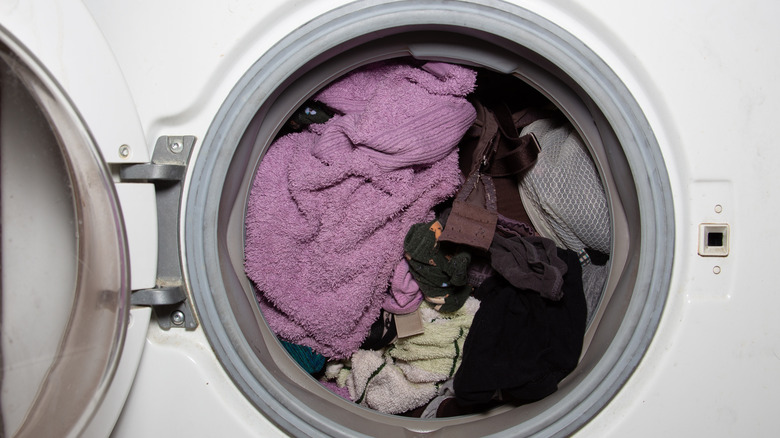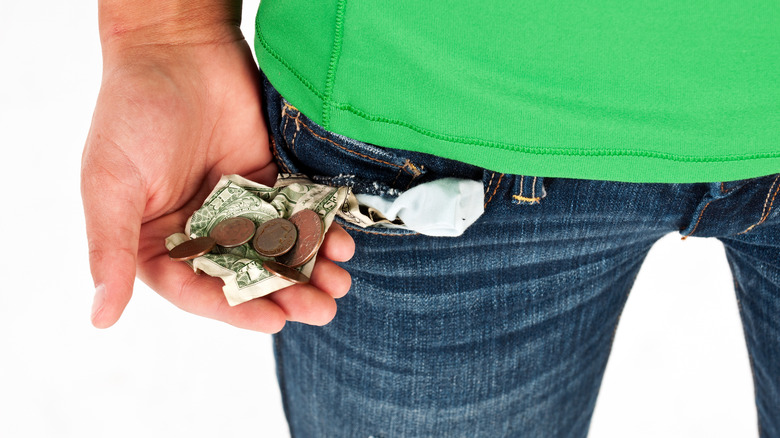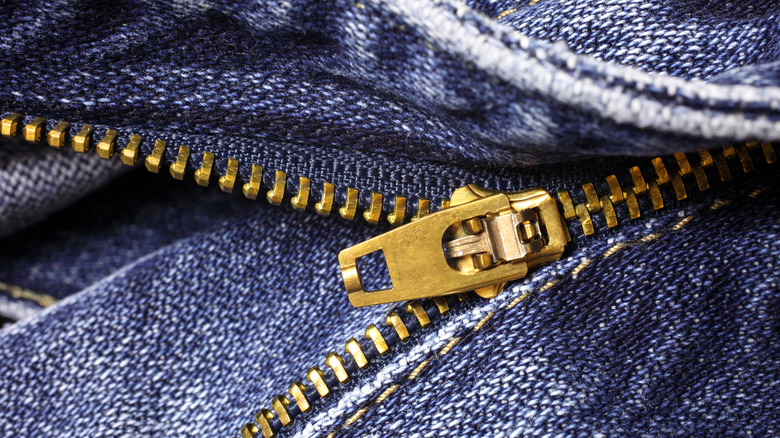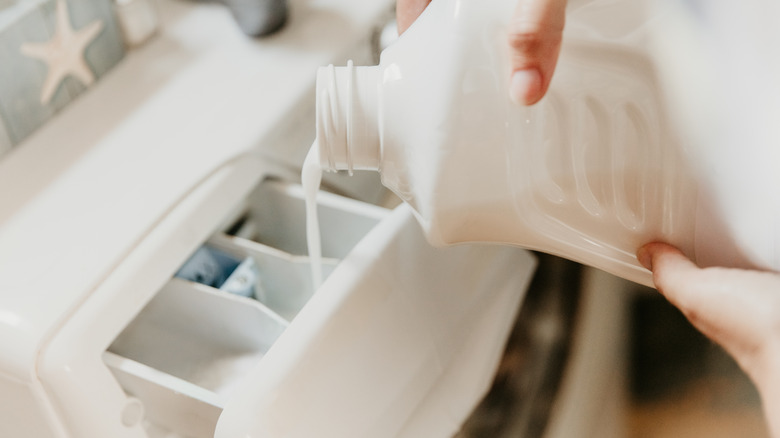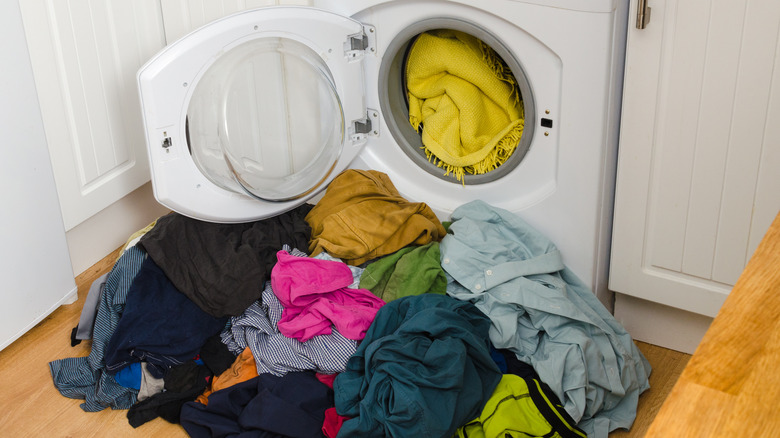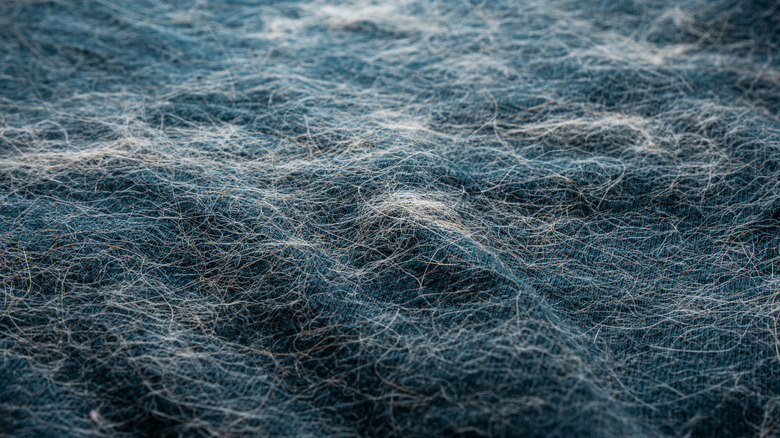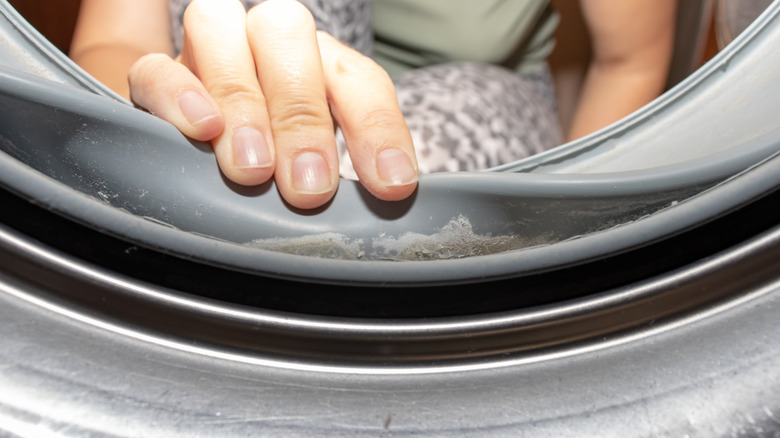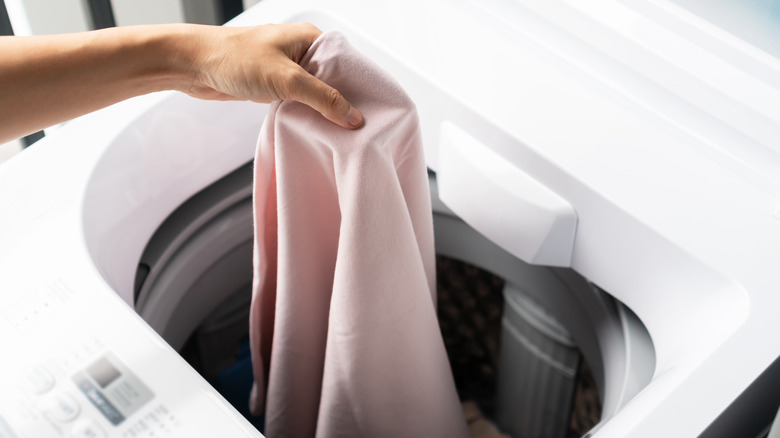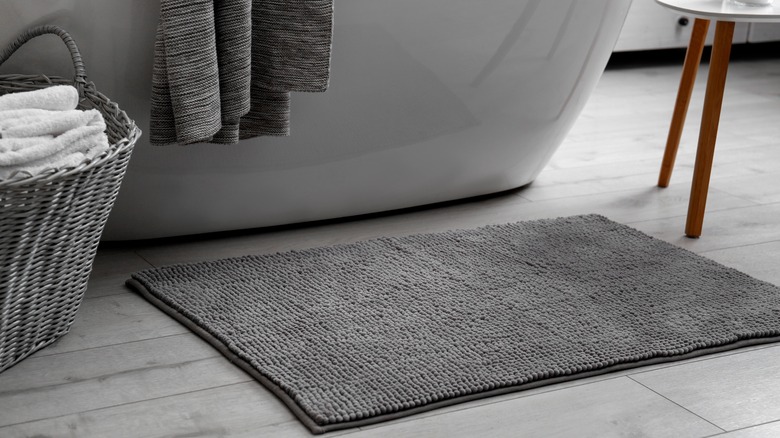9 Ways You're Destroying Your Washer And Dryer Without Even Noticing
Washers and dryers have really helped to simplify our lives. You can easily toss in a load of clothes and let the machines do the work for you, while you attend to the rest of your busy schedule. However, this doesn't mean that you don't need to think and be purposeful about what you're washing and how you're using the machines.
A washer and dryer are not indestructible. They won't last forever. And, if you abuse them, their lifespan is going to get even shorter. Unfortunately, there are many small mistakes that could be slowly destroying these machines. You might not realize the impact you're having on them, until it is too late and you're faced with the challenge — and expense — of shopping for a new washer or dryer. Take a few minutes now to learn more about some of these ways you could be damaging your machines and learn what you should be doing to protect them to keep them running smoothly for years to come.
Forgetting to empty pockets
It's easy to take off a pair of pants, toss them in the hamper and later to dump that hamper into the washing machine. However, it is really important to check your pockets before doing laundry. If you fail to remove coins, keys, and other metal, they could end up scratching the drum of the washer or dryer. It is also possible that they'll damage the appliance enough that it could cause a leak. If you have a front-loading washing machine, failing to empty your pockets may even endanger your safety or that of others in your home. If the metal hits against the glass just right, it may cause it to shatter, leaving you with a wet mess full of glass shards to deal with.
Even if you don't have metal objects in your pockets, you'll still want to make sure they're empty before starting a load of laundry. Pens or anything else colored could bleed and transfer the color to your clothes. Paper, especially tissues, can become shredded. It will distribute throughout the load, making it more difficult to remove from the clothing items.
Failing to close zippers before washing clothes
Another important check you should perform before putting clothing items into the washer is to make sure that all of the zippers are closed. Beyond the potential for an open zipper to snag another piece of laundry in the load with it, the zipper may also cause harm to the washer or dryer itself.
As the laundry tosses around the drum, it can scratch the plastic or stainless steel material, or even the glass on a front-loading machine. Like coins and other objects that might be in your pockets, it is also possible that a zipper will rub against a glass door in such a way that it shatters the glass. A few washing machines have even exploded after their glass door was shattered by a rogue object, creating an even more serious concern. Take a few minutes as you place items in the washer to verify that all of the zippers on pants, shirts, and jackets are fully zipped up to lessen the chances of something bad happening.
Adding too much detergent
Many people don't know how much laundry detergent they should add to each load. Some may even assume that more detergent will result in cleaner clothes. Well, it doesn't work that way, and adding too much laundry detergent can cause serious problems with your washing machine. Overtime, excess detergent will build up in the hoses and valves. This buildup can lead to blockages or improper draining. When water isn't able to drain properly, it becomes more likely that mold or mildew will grow.
What's more, excess detergent isn't good for the clothes or linens you're trying to clean. Cutting back on the amount of detergent you use can result in cleaner clothes, too. Friction from laundry items rubbing together is what gets them clean during a wash cycle. If you add excessive amounts of detergent, it will reduce the amount of friction that is produced, leaving you with clothing that isn't all the way clean. Instead, always follow the manufacturer's recommendations for the type of laundry detergent you use or use the detergent dispensers in the machine to prevent accidentally adding more than is needed.
Overloading the machines
When you're washing a load of laundry, take care to avoid adding too much to the washing machine in a single load. Clothing and linens are heavy — and even heavier when they're wet. If the machine is overloaded, too much strain may be placed on the motor. This can damage the motor and may even necessitate a repair in order for the machine to function properly. Overloaded washers also won't clean your items as well. If you stuff every inch with clothing and linens, there won't be enough space for the items to move around and rub against each other to ensure a thorough cleaning. It is also more likely that a zipper or button from one piece of clothing may snag another item in a washer that is overfilled.
Double-check the manufacturer's recommendations for filling the tub. Most recommend leaving 6 or more inches of space between the top of the machine and the top of the clothing pile. There are a few indications that can help you realize whether you've been making this mistake so that you can make changes for the future. In addition to your laundry not getting clean enough, if the load is still very wet once the cycle ends, a soapy residue remains when you open the lid at the cycle's end, or you hear a lot of loud vibrations as the washer is cleaning, you've probably been adding too much to each load.
Tossing in pet hair-covered items
If your furry friends tend to shed all over your clothing or blankets, you'll want to learn how to keep your washing machine pet hair free. While your washer is, obviously, designed to clean your laundry, throwing in items that are covered in pet hair isn't a good idea. As the hair is washed off of your clothing, it can form larger clumps in the drum. The clumps of hair can work their way into the drain line as the water spins out of the machine, potentially creating a blockage.
Before washing pet hair-covered fabrics, run a lint roller over them to pull off as much fur as possible. Another solution is to put the furry clothes and linens in the dryer before washing them. A no-heat setting can pull the hair off of the clothes and leave it trapped in the lint screen. After the first drying cycle, move the load to the washing machine to clean as normal, and then transfer it to the dryer once again.
Not keeping the machines clean
Just because you use your washer and dryer to clean your clothes doesn't mean that the machines themselves will always stay clean. It is important to regularly clean the inside of your washing machine and dryer to ensure they keep operating properly and to make sure your clothes actually come out smelling fresh. Many washing machines have self-cleaning cycles which are designed to remove germs and bacteria from the machine and wash away any detergent buildup in the drum. You can add some white vinegar and baking soda to the load before selecting the cleaning cycle, or you can purchase tablets specifically designed for this task. If your washer doesn't have a dedicated cleaning cycle, just set it to the longest and hottest setting available. For front-load machines, make sure you also clean the seal around the door to prevent mold from growing.
The dryer should also be cleaned regularly. Wipe out the inside of the drum with a damp microfiber cloth and don't forget to empty the lint trap after every load. If the lint screen is covered, it makes it more difficult for air to circulate through the machine. Not only can this make drying a load take longer, but it can also make your machine work harder to get each load dry, potentially decreasing its lifespan. Cleaning the lint trap — and the dryer vent — are also important to prevent a dryer fire. If you're not comfortable cleaning the dryer vent yourself, there are professional companies you can hire for this task.
Not making sure each load is balanced
Take a few extra moments when loading the washer to make sure the load is balanced. If the machine is unbalanced, the tub won't spin evenly. This can cause it to hit the sides of the unit as it spins, potentially causing damage. If the machine isn't balanced and the drum is leading to one side, it can also interfere with proper drainage. The machine may leak, leaving you to discover a huge mess on the laundry room floor.
The first step in keeping the washer balanced is to make sure you load it properly. In addition to not overloading the vessel, which we discussed earlier, make sure to evenly spread the clothing or linens around the drum. If you have a huge blanket stuffed on one side of the agitator, but the other side of the drum is empty, it won't remain balanced during the wash cycle. If you continue having problems with the machine getting off-balanced, check that it is level, and adjust the legs if needed. A worn-out shock absorber, which sits between the outside of the tub and the frame of the machine, can also cause it to become unbalanced during a wash cycle.
Trying to dry rubber-backed mats
Most bathmats are machine-washable. However, if you've been wondering whether you can put the mat in the dryer after washing it, that may be another story. In short, the answer is: it depends. Many mats can go in the dryer, but always check the manufacturer's care instructions. However, there is one type of mat you'll never want to try to dry: those with a rubber backing.
The high heat of a dryer can damage the rubber backing of the mat. But, even more serious than the damage to the mat itself is the damage that your dryer may face. As the rubber cracks and comes off the mat, it may get stuck in the dryer, potentially creating a fire hazard. Even if you're lucky enough to escape a fire, you'll still be left with a mess to clean up, with tiny bits of rubber all over the place and stuck on any other items that were in the load.
Failing to shake out sandy towels before washing or drying them
When you come home from the beach, you inevitably bring a lot of sand with you. One of the places where you're likely to find a lot of sand hiding is in your beach towels. While you may want to get these towels in the washer as soon as you're back to clean them up, don't rush so much that you end up putting too much sand into the machine. Sand is rough. If too much gets into your washer, it is going to rub against the drum and scratch it. The tiny granules may also get trapped in any openings or potentially cause blockages.
So, how are you supposed to wash your beach towels? Don't worry, you can still use your washing machine, but only after you've shaken off as much sand as possible. When you get back from the beach, hang the towels up to dry. Once dry, take them outside and give them several good shakes before putting them in the washer. Don't skip the step of letting them dry before you try to shake off the sand; wet sand will cling to the towel much more than loose sand will.
